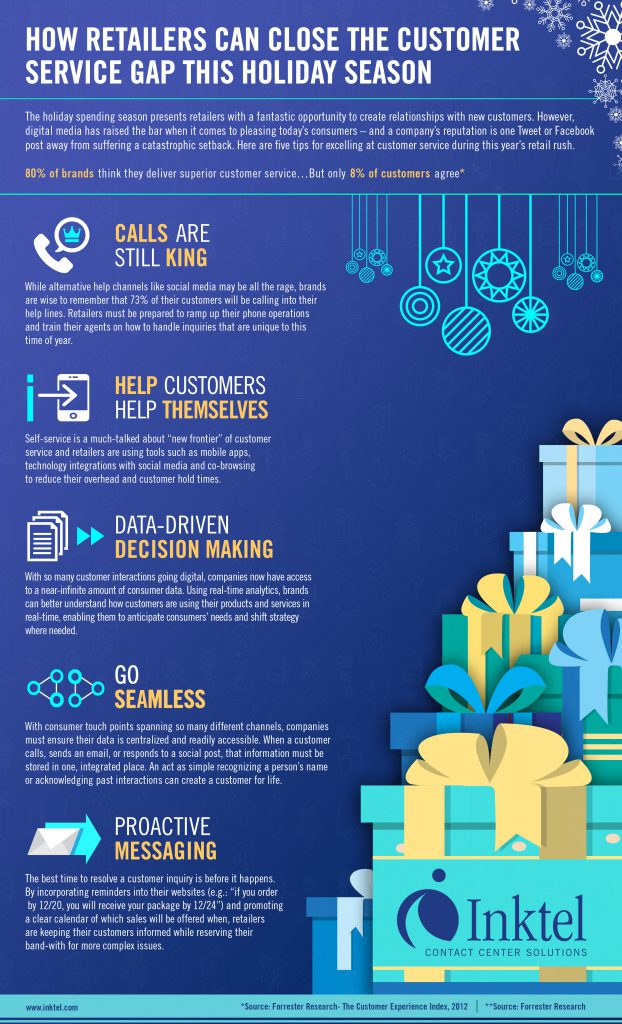Fortune 500 companies, small businesses and e-commerce shops all have one goal: develop trust and loyalty among clients. The key to doing so lies in providing excellent customer service.
In no industry is that tougher than retail over the holidays. Imagine the anxiety level at a big-box store at 5 a.m. on Black Friday as customers search for deals on items that may have already been scooped up.
Computer glitches, delivery problems, return questions and more make online shopping just as stressful. To keep up, major companies must hire hundreds or in some cases thousands of seasonal employees to keep pace with the onslaught of phone calls.

The rapid growth of social media and other digital channels have driven expectations for instant, personalized customer care even higher. In fact, [24]7’s 2016 Customer Engagement Index found nearly half of consumers would take their business to a competitor within a day of receiving poor customer service.
So there’s a lot at stake, and customer service providers across the globe have been forced to come up with ways to get ahead of shifting customer attitudes and a changing retail climate.
Inktel, a leading third-party customer service provider for some of the world’s most recognizable brands, has managed to keep customers happy – even amid the madness of the holiday shopping season. Here are five lessons professionals in industries across the spectrum can learn from their experience.
1) The call is king. While we may have become comfortable with wishing family members a happy birthday by text, most people opt to make a call when they have questions about a purchase. Even in the digital age, companies should not underestimate the importance of investing in front office staff that are trained to be personal and flexible in their communication with clients, rather than relying on automated answering systems.
2) Be proactive. Through the rise of social media, people have grown to expect a certain level of immediacy. With that in mind, the best time to resolve a customer inquiry is before it happens. By utilizing a frequently asked questions page on your company’s website and monitoring social media channels for feedback, companies can reserve greater bandwidth for complex inquiries while avoiding frustration.
3) Don’t deny the data. Companies now have access to a near-infinite amount of data. Using real-time analytics, businesses can better understand their client’s wants and needs, enabling them to shift strategy when necessary.
READ RELATED: PROTECTING YOUR REPUTATION IN THE INFORMATION AGE
4) Go seamless. With client touchpoints spanning so many different channels, companies must ensure their data is safely stored in one integrated place in order to best serve their clients. See bullet three.
5) Anticipate what’s next. Self-service is being hailed as the future of customer care, and companies can significantly reduce overhead costs by helping customers to help themselves. Whether that’s through a simple FAQ section on a homepage or via high-tech services like mobile apps with built-in messaging, live co-browsing or even chatbots – the key to world-class customer service is educating clients to be as self-sufficient as possible and providing them with the tools to do it.








 See More Blogs
See More Blogs
Comments